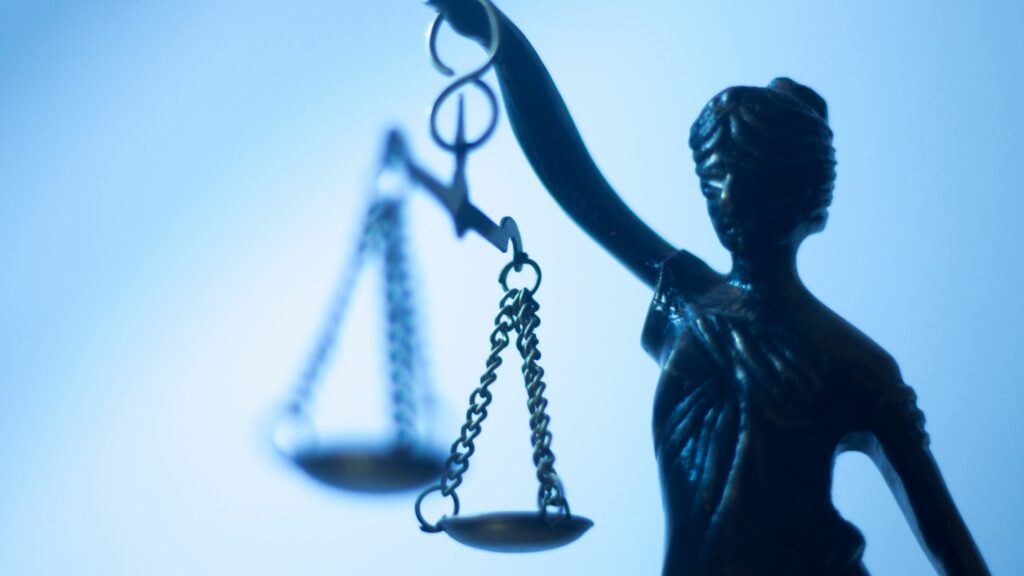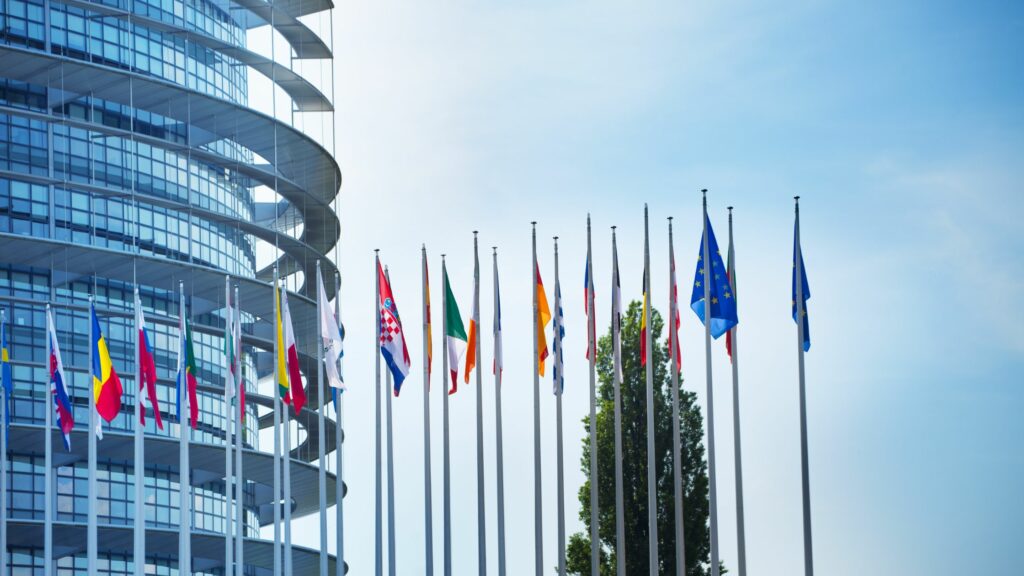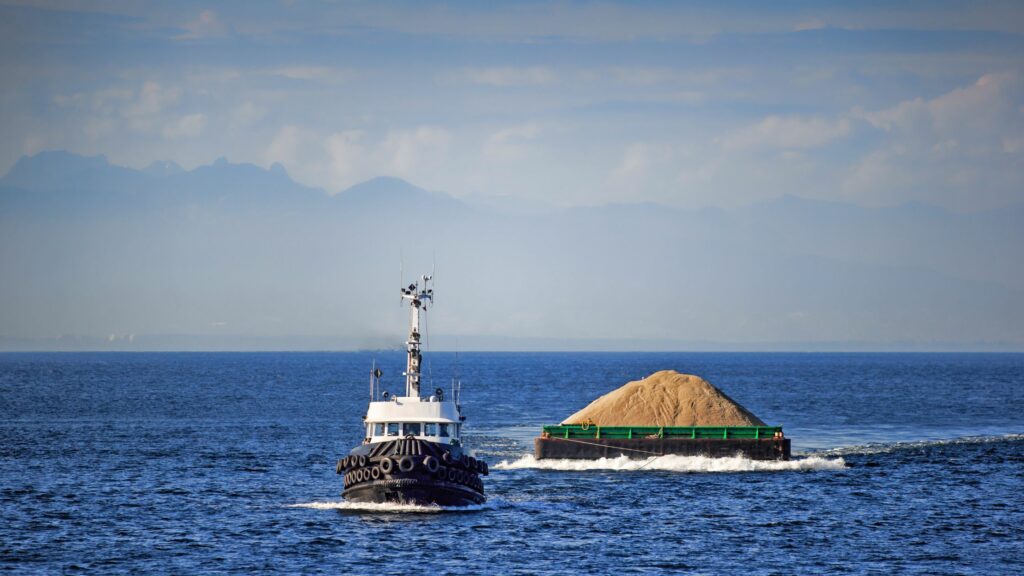Physical Address
304 North Cardinal St.
Dorchester Center, MA 02124

Maritime law, often overshadowed by its more terrestrial legal counterparts, holds a unique position in the realm of international law. It navigates through the complexities of the high seas with a set of principles that ensure safety, environmental protection, and fair trade. This specialized legal field distinguishes itself with its focus on maritime issues, offering a tailored approach that addresses the specificities of sea navigation and commerce.
At the heart of maritime law are key categories such as Shipping Law, Maritime Safety Regulations, and Environmental Maritime Law, each playing a pivotal role in shaping the maritime industry. Shipping Law covers the contractual and operational aspects of transporting goods across the world’s oceans, while Maritime Safety Regulations focus on the well-being of crews and the safety of vessels. Environmental Maritime Law, on the other hand, tackles the pressing issues of pollution and the protection of marine ecosystems.
Delving deeper, each category of maritime law brings its own set of rules, enforcement mechanisms, and implications for global shipping and trade. The following sections will unfold these layers, offering insights into the mechanisms of maritime law, its enforcement challenges, and its impact on the global maritime industry. Through this exploration, readers will gain a comprehensive understanding of the critical role maritime law plays in facilitating international commerce and safeguarding our oceans.
Maritime law, also known as admiralty law, is a specialized branch of law that governs international private maritime business, nautical issues, and maritime disputes. This legal framework encompasses a variety of regulations, from the construction and operation of ships to the transportation of goods and passengers across the world’s oceans. It is instrumental in regulating the maritime industry, ensuring the smooth flow of global trade through the establishment of clear rules and standards.
At its core, maritime law addresses critical areas such as the registration and ownership of ships, cargo handling, and maritime safety, placing a strong emphasis on safety, security, and environmental protection. These regulations are vital for preventing accidents at sea, safeguarding the marine environment, and resolving disputes that arise from maritime operations. By providing a structured approach to maritime commerce, maritime law serves as the backbone of international shipping and trade, underscoring its significance in the global economy.
Maritime law emerged from the imperative to manage the unique challenges and complexities inherent in the maritime industry. Its foundation was laid to ensure safe navigation and prevent maritime accidents, crucial for protecting lives and cargo across the vastness of the world’s oceans. The regulation of maritime commerce and trade practices also became a cornerstone of maritime law, aimed at facilitating smooth and efficient global trade.
A significant driving force behind the creation of maritime law was the urgent need to protect marine environments from the adverse effects of pollution and overexploitation. As maritime activities burgeoned, their environmental footprint grew, highlighting the necessity for stringent regulations to safeguard marine ecosystems. Through its comprehensive scope, maritime law seeks to strike a delicate balance between promoting economic development and ensuring environmental conservation within the maritime sector, underscoring its pivotal role in sustaining the health of our planet’s oceans.
A primary aim of maritime law is to ensure safe navigation and prevent maritime accidents. This is achieved through rigorous standards for vessel construction, operation, and crew training. Such regulations are essential not only for the safety of those at sea but also for the protection of the cargo being transported.
Statistics indicate a significant reduction in maritime accidents following the implementation of the International Convention for the Safety of Life at Sea (SOLAS). For instance, the number of shipwrecks has decreased by over 50% in the decades following the adoption of SOLAS, illustrating the positive impact of maritime safety regulations.
Maritime law is instrumental in regulating maritime commerce and trade practices. It establishes a comprehensive legal framework that governs the transportation of goods across the seas, covering aspects like shipping contracts, bills of lading, and the allocation of rights and liabilities among involved parties. This regulatory foundation ensures that maritime transactions are conducted with fairness and efficiency, fostering trust and confidence in the international trading system.
An example of maritime law facilitating smoother international trade is the United Nations Convention on the Carriage of Goods by Sea, known as the “Hamburg Rules,” which have standardized and modernized the international shipping industry’s contractual obligations, leading to more predictable and secure maritime commerce.
Another cornerstone of maritime law is its commitment to protect marine environments from pollution and overexploitation. Through stringent regulations, it limits the discharge of pollutants such as oil and chemicals from vessels and promotes responsible fishing practices. These measures are critical for the conservation of marine biodiversity and the sustainability of ocean ecosystems.
The International Convention for the Prevention of Pollution from Ships (MARPOL) was established in response to catastrophic oil spills, such as the Torrey Canyon disaster in 1967, which prompted global action to significantly reduce pollution from maritime sources and has led to a marked improvement in the health of marine environments.
Maritime laws are a specialized branch of international laws, uniquely crafted to govern the intricacies of activities on seas and oceans. Unlike the broad spectrum covered by international laws, which address issues across land, air, and even space, maritime laws focus solely on maritime concerns. These include the construction, operation, and insurance of ships, management of maritime resources, and regulation of shipping routes and maritime labor.
Tailored to meet the specific challenges of the maritime environment, maritime laws ensure the safe, secure, and efficient passage of seafaring operations. In contrast, international law serves a broader purpose, encompassing the relationships and agreements between countries in a wide array of domains. Maritime law, however, zeroes in on the legal framework essential for the smooth functioning of the global maritime industry, facilitating international trade and commerce via the world’s oceans.
This distinction underscores the importance of maritime law in supporting the unique needs of international maritime activities, making it indispensable for global trade and navigation.
Maritime laws are meticulously crafted to specifically govern the wide array of activities on seas and oceans. This encompasses ship operation, cargo handling, maritime labor, and the protection of marine environments. By focusing on these maritime-centric issues, these laws offer a tailored legal framework adept at navigating the unique challenges and complexities of the maritime sector.
This specialization ensures comprehensive regulation across all facets of maritime activities, promoting safety, efficiency, and environmental sustainability on a global scale.
Contrastingly, international laws operate on a much broader spectrum, addressing legal matters that span across land, air, and sea. These laws deal with a diverse array of topics from territorial disputes and diplomatic relations to global trade agreements and environmental protocols. The aim of international laws is to foster cooperation, facilitate conflict resolution among nations, and provide a cohesive legal framework for global governance.
This expansive coverage ensures that international laws are equipped to handle the multifaceted and interconnected challenges of the global community, extending well beyond the maritime-specific focus of maritime laws.
The global maritime sector is regulated and supported by several pivotal organizations, each dedicated to specific aspects of maritime operations. At the forefront is the International Maritime Organization (IMO), which is the cornerstone for safety and environmental standards in shipping. The IMO’s role involves the development and maintenance of a comprehensive regulatory framework designed to enhance maritime safety and prevent pollution from ships.
One notable convention under the IMO is the International Convention for the Prevention of Pollution from Ships (MARPOL), adopted in 1973 and significantly amended in 1978, which has been instrumental in dramatically reducing pollution from maritime sources. Another crucial entity is the International Labour Organization (ILO), which champions the rights and working conditions of seafarers across the globe. The ILO sets international labor standards to ensure that maritime workers are provided with fair treatment and operate in safe conditions.
A significant intervention by the ILO was the adoption of the Maritime Labour Convention (MLC) in 2006, often referred to as the “Seafarers’ Bill of Rights,” which has led to substantial improvements in the working and living conditions of seafarers worldwide. Together, the IMO and ILO play indispensable roles in ensuring the efficient and ethical functioning of the international maritime industry, highlighting their significance in promoting safety, environmental protection, and workers’ rights on a global scale.
| Organization | Convention/Amendment | Year | Impact |
|---|---|---|---|
| IMO | MARPOL | 1973/1978 | Significantly reduced pollution from ships, addressing oil, noxious liquid substances, sewage, and garbage. |
| ILO | Maritime Labour Convention (MLC) | 2006 | Improved the working and living conditions of seafarers, ensuring fair treatment and safety. |

Several foundational conventions are central to the framework of maritime laws, each addressing key aspects of maritime regulation. The United Nations Convention on the Law of the Sea (UNCLOS) stands as a cornerstone, establishing the legal guidelines for maritime boundaries, navigation rights, and the use of marine resources. Equally vital is the International Convention for the Safety of Life at Sea (SOLAS), which imposes rigorous safety standards on the construction, equipment, and operation of ships to safeguard life at sea.
The Maritime Labour Convention (MLC), often hailed as the “seafarers’ bill of rights,” articulates the rights of seafarers and prescribes standards for their working and living conditions. Together, these conventions play a critical role in steering the practices and operations of the global maritime industry towards safety, environmental protection, and the welfare of maritime workers.
The United Nations Convention on the Law of the Sea (UNCLOS) establishes a comprehensive legal framework governing maritime boundaries and the use of oceanic spaces. It outlines the principles for determining national jurisdiction over maritime zones, including territorial seas, exclusive economic zones (EEZs), and continental shelves, fostering peaceful cooperation and navigation, and ensuring the sustainable use and conservation of marine resources. A notable example of UNCLOS in action is the resolution of the maritime boundary dispute between Bangladesh and Myanmar in 2012, where the International Tribunal for the Law of the Sea delineated the maritime boundary, enhancing regional stability and access to marine resources.
The International Convention for the Safety of Life at Sea (SOLAS) sets the benchmark for ship safety, mandating strict standards for the construction, equipment, and operation of ships. Its primary goal is to ensure the safety of life at sea by requiring that ships comply with technical specifications and operational guidelines designed to minimize risks and protect marine environments. Since its latest consolidation in 1974 and subsequent amendments, SOLAS has significantly contributed to the reduction of maritime incidents, with a notable decrease in shipwrecks and loss of life at sea.
The Maritime Labour Convention (MLC), often referred to as the “seafarers’ bill of rights,” provides a comprehensive set of standards for the employment and working conditions of seafarers. It covers a wide array of aspects, including contractual arrangements, hours of work and rest, accommodation, recreational facilities, food and catering, health protection, medical care, welfare, and social security protection. The MLC aims to ensure that seafarers work under fair conditions, have their rights protected, and live in safety and dignity aboard ships.
Testimonials from seafarers and comparative studies before and after the MLC’s implementation in 2013 highlight significant improvements in living and working conditions aboard vessels, demonstrating the convention’s positive impact on the maritime workforce.
| Convention | Key Focus | Example/Impact |
|---|---|---|
| UNCLOS | Maritime Boundaries | Resolved the maritime boundary dispute between Bangladesh and Myanmar in 2012, promoting regional stability. |
| SOLAS | Ship Safety | Contributed to a significant decrease in maritime incidents and enhanced safety standards since its consolidation in 1974. |
| MLC | Seafarers’ Employment and Working Conditions | Improved living and working conditions for seafarers, as evidenced by positive testimonials and studies post-2013 implementation. |

Maritime laws play a critical role in shaping the landscape of shipping and navigation, ensuring that the vast network of global maritime operations runs smoothly and safely. By setting rigorous standards for vessel construction, maintenance, and operation, these laws guarantee that ships are not only seaworthy but are also capable of navigating the complexities of international waters. Additionally, maritime laws provide comprehensive regulations for cargo handling, stowage, and documentation, facilitating the efficient and secure transportation of goods across the globe.
Through these detailed provisions, maritime laws enhance the safety, security, and efficiency of maritime activities, underpinning the reliability of global trade and the economic well-being of nations connected by the world’s oceans.
Maritime laws enforce rigorous standards for vessel construction, maintenance, and operation. These crucial regulations are in place to ensure that ships are structurally sound, properly maintained, and operated by qualified personnel. The aim is to uphold the highest safety standards, reducing the risk of maritime incidents and ensuring the well-being of both crew and cargo.
Significant improvements in ship safety and efficiency have been observed due to these standards. For example, the introduction of the SOLAS Convention has led to a marked reduction in the number of shipwrecks and maritime accidents, demonstrating the effectiveness of these regulations in enhancing maritime safety.
| Aspect | Before SOLAS Implementation | After SOLAS Implementation |
|---|---|---|
| Number of Shipwrecks | High | Significantly Reduced |
| Maritime Accidents | Frequent | Markedly Decreased |
| Safety Standards Compliance | Variable | High |
Maritime laws also meticulously regulate cargo handling, stowage, and documentation, setting the guidelines necessary for the safe and efficient transport of goods across the seas. These regulations cover everything from the proper loading and securing of cargo to prevent shifting at sea, to the detailed documentation needed for smooth customs clearance. By standardizing these processes, maritime laws facilitate international trade, ensuring that goods move seamlessly and securely from one port to another, minimizing risks and enhancing global commerce efficiency.
A notable scenario highlighting the importance of these regulations occurred when strict adherence to cargo stowage guidelines prevented a potential disaster aboard a vessel carrying hazardous materials. The proper application of maritime laws regarding cargo handling and stowage ensured the stability of the ship during a severe storm, averting a possible environmental catastrophe.
| Scenario | Challenge | Maritime Law Application | Outcome |
|---|---|---|---|
| Severe Storm | Potential Cargo Shift | Strict Adherence to Stowage Guidelines | Ship Stability Maintained, Disaster Averted |
The key distinction between maritime law and law of the sea revolves around their respective scopes and areas of focus. Maritime law, also known as admiralty law, specifically deals with regulations, conventions, and legal practices related to maritime activities. This includes aspects such as shipping, navigation, the carriage of goods and passengers by sea, and maritime insurance.
It primarily concerns private maritime disputes and commercial maritime regulations. Conversely, law of the sea is a branch of international law that outlines the rights and responsibilities of states in their use of the world’s oceans. It encompasses a broader range of issues, including the delineation of territorial waters, exclusive economic zones (EEZs), and the conservation and management of marine resources.
While maritime law focuses on the commercial and navigational aspects of the maritime industry, law of the sea provides the framework for the governance of the oceans at the international level, addressing the public legal aspects of maritime spaces.
Maritime laws are instrumental in safeguarding the marine environment, enacting stringent regulations to mitigate the ecological impact of maritime operations. These laws are designed to limit the discharge of harmful pollutants, such as oil, chemicals, and garbage from ships, directly contributing to the preservation of marine biodiversity and the protection of ocean habitats. Additionally, maritime laws advocate for the development and use of environmentally friendly ship designs and cleaner fuel options, aligning with global efforts to address climate change.
Through these comprehensive measures, maritime laws not only regulate the impact of the maritime industry but also champion sustainable practices, underscoring a deep commitment to the long-term health and vitality of the world’s oceans.
Maritime laws are pivotal in preventing pollution by strictly limiting the discharge of oil, chemicals, and garbage from ships. These regulations are essential for the preservation of marine ecosystems, safeguarding them against the harmful impacts of such pollutants. The International Convention for the Prevention of Pollution from Ships (MARPOL) is a prime example of how maritime laws have led to a significant decrease in maritime pollution incidents.
Since its adoption, MARPOL has been instrumental in reducing oil spills and chemical discharges, with reported incidents of oil pollution from ships decreasing by over 60% in the past three decades.
Additionally, maritime laws actively encourage the adoption of environmentally friendly ship designs and the use of cleaner fuels. Innovations such as the introduction of liquefied natural gas (LNG) as a cleaner alternative to traditional bunker fuel and advancements in hull design to reduce drag and improve fuel efficiency have been adopted industry-wide as a result of these laws. Environmental impact assessments have shown that ships utilizing LNG can reduce their sulfur oxide emissions by up to 95%, significantly mitigating their environmental footprint.
These advancements underscore the role of maritime laws in driving technological innovation and environmental stewardship within the maritime industry.
Maritime laws are enforced through a synergistic approach that combines international cooperation and national regulatory frameworks. Organizations at the forefront, such as the International Maritime Organization (IMO), are instrumental in establishing global standards and promoting agreements among member states. On the national front, maritime authorities take the baton by translating these international standards into local legislation, overseeing their implementation, and conducting rigorous inspections to ensure compliance.
A pivotal aspect of enforcement is port state control inspections, which empower countries to inspect foreign vessels in their ports, verifying adherence to international safety, security, and environmental standards. This layered enforcement mechanism ensures that maritime laws are upheld across the globe, safeguarding the principles of maritime safety, security, and environmental protection in international shipping operations.
Port state control inspections are a cornerstone in the enforcement of maritime laws, designed to verify that ships adhere to international standards. These inspections scrutinize a vessel’s safety protocols, crew qualifications, and environmental compliance, among other criteria. They are essential for identifying and rectifying any deficiencies, thereby upholding the highest standards of maritime safety and environmental protection on a global scale.
Statistics and case studies highlight the effectiveness of port state control inspections. For example, the Paris MoU annual report on port state control indicates a significant decrease in the number of detained ships due to safety and environmental non-compliance, showcasing the inspections’ role in enhancing maritime safety and environmental protection.
| Year | Number of Inspections | Number of Detentions | Detention Percentage |
|---|---|---|---|
| 2018 | 18,000 | 500 | 2.8% |
| 2019 | 17,500 | 450 | 2.6% |
| 2020 | 16,000 | 300 | 1.9% |
National maritime authorities are instrumental in bringing international maritime standards into the realm of national enforcement. They integrate these global standards into local maritime legislation, ensuring that vessels within their jurisdiction comply with the established safety, security, and environmental protocols. Through a combination of regulatory oversight, inspections, and certification processes, these authorities ensure the maritime industry’s adherence to international norms, fostering a safe and sustainable maritime environment.
A notable example of successful enforcement is Singapore’s Maritime and Port Authority (MPA), which has implemented stringent local maritime regulations aligned with international standards. The MPA’s proactive approach includes regular inspections, strict enforcement of pollution control measures, and comprehensive seafarer training programs. As a result, Singapore has seen a notable improvement in maritime safety and environmental compliance, establishing itself as a leading maritime hub with one of the lowest rates of maritime incidents globally.
| Country | Measures Implemented | Outcomes |
|---|---|---|
| Singapore | Stringent inspections, pollution control, seafarer training | Reduced maritime incidents, enhanced safety and environmental compliance |

Enforcing maritime laws faces significant hurdles, primarily due to the vast and international nature of the maritime domain. Jurisdictional complexities in international waters and exclusive economic zones (EEZs) pose a major challenge, as it can be unclear which nation’s laws are applicable. This issue is further exacerbated by variations in enforcement capabilities and priorities across different countries.
Some nations are equipped with advanced systems and the political resolve for stringent enforcement of maritime regulations, while others may lack the necessary resources or inclination. Moreover, the global scale of shipping operations and the inherent mobility of maritime assets add layers of difficulty to consistent monitoring and enforcement. These challenges underscore the need for international cooperation and coordination to ensure the effective enforcement of maritime laws across the globe.
Navigating the jurisdictional complexities in international waters and exclusive economic zones (EEZs) presents a formidable challenge in the enforcement of maritime laws. A specific case highlighting these complexities involved the Arctic Sunrise incident, where a vessel operated by Greenpeace was boarded and detained by Russian authorities in the Arctic in 2013. The dispute centered around activities in the EEZ and the interpretation of rights under UNCLOS.
It was addressed through international arbitration under the auspices of UNCLOS, leading to the release of the vessel and its crew and highlighting the challenges of jurisdictional claims in international waters.
The differences in enforcement capabilities and priorities among countries significantly impact global maritime law compliance. A comparative analysis reveals a wide disparity in enforcement effectiveness, with developed maritime nations often having robust systems for monitoring and enforcement, while developing countries may struggle due to limited resources and technical capabilities. This disparity affects the uniform application of international maritime law, leading to areas where compliance is less stringent.
| Region | Enforcement Capabilities | Impact on Maritime Law Compliance |
|---|---|---|
| Developed Maritime Nations | High | Strong compliance, advanced monitoring, and enforcement mechanisms |
| Developing Maritime Regions | Variable | Challenges in consistent enforcement, potential for non-compliance |
Maritime disputes are addressed through several mechanisms designed to ensure a just and efficient resolution. Arbitration in specialized maritime courts and tribunals stands as a primary method, allowing disputing parties to present their case before an impartial arbiter for a binding decision. The United Nations Convention on the Law of the Sea (UNCLOS) further provides a comprehensive legal framework for resolving issues related to maritime boundaries and access to marine resources.
In addition, diplomatic negotiations and international cooperation between states are key in settling disputes, particularly those concerning sovereignty and rights over maritime zones. Through these avenues, supported by the principles of international maritime law, conflicts are resolved in a manner that upholds legal standards and promotes the smooth operation of maritime activities.
Arbitration in specialized maritime courts and tribunals is a key method for resolving maritime disputes. This approach allows the involved parties to present their case before an impartial panel, which then makes a binding decision based on maritime law. Valued for its maritime expertise and capacity to deliver clear resolutions, arbitration ensures disputes are settled fairly, in line with established legal norms.
The application of the United Nations Convention on the Law of the Sea (UNCLOS) provisions offers a solid legal framework for addressing disputes over maritime boundaries, navigation rights, and the exploitation of marine resources. UNCLOS provides comprehensive guidelines and legal standards, enabling the peaceful resolution of disputes on a commonly agreed legal foundation. Its role is pivotal, making it a keystone in the architecture of international maritime law.
Diplomatic negotiations and international cooperation between states are instrumental in resolving maritime disputes, particularly those entailing sovereignty and jurisdictional issues. Through constructive dialogue and negotiation, states can reach agreements that reflect mutual interests, often circumventing the need for formal dispute resolution mechanisms. This method underscores the importance of peaceful collaboration and shared governance in maritime affairs, aligning with the principles of international maritime law.